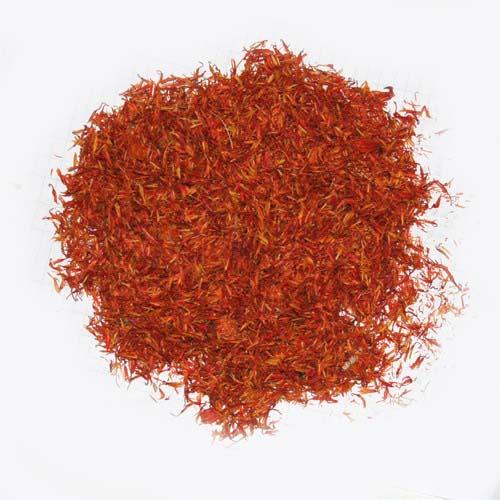Safflower
The Processing of Safflower
Origin
The dry flower of annual herbaceous plant Carthamus tinctorius L. of family Compositae.
Location
Henan, Hubei and Sichuan provinces in China.
Harvest
Collected in summer when the flower changes from yellow to fresh red.
The actual smell and taste
Lightly fragrant smell and lightly bitter taste.
Best quality
Fresh red corolla without spine, soft and moist like pappo when touched.
Processing
Dried in the shadow or in the sun.
The Effect of Safflower
Property
Pungent, warm; heart and liver meridians entered.
Actions
Activate blood and dredge meridians, dispel stasis and alleviate pain.
Indications
A. Amenorrhea due to stasis, dysmenorrhea, postpartum abdominal stagnant pain
This herb is an excellent herb for activating blood and dredging meridians, and dispelling stasis and relieving pain. It is a commonly used herb in treating blood stasis in gynecology and obstetrics. It is used singly or combined with blood-activating and nourishing and meridian-dredging herbs such as Dang Gui, Chuan Xiong and Tao Ren. For instance, for dysmenorrhea caused by blood stasis, it is decocted with wine in Hong Lan Hua Jiu from Jin Kui Yao Lue. For amenorrhea due to stagnant blood, it is combined with Dang Gui, Chi Shao and Tao Ren, etc. in Tao Hong Si Wu Tang from Yi Zong Jin Jian. For postpartum abdominal stagnant pain, it is combined with blood-activating analgesics, for instance with Pu Huang and Mu Dan Pi, etc. in Hong Hua San from Huo Fa Ji Yao (Confidential Essentials of Therapeutic Principles).
B. Mass, stagnant pain of heart and abdomen, traumatic injuries, sore, abscess, swelling and pain
This herb has the actions of dispelling mass, unblocking blood vessels, resolving swelling and relieving pain by activating blood and resolving stasis. For mass, it is usually combined with blood-breaking and mass-eliminating herbs such as San Leng, E Zhu, Shui Zhi and Meng Chong, etc. For obstruction of heart vessels and angina pectoris, it is combined with yang-activating and nodulation-dissipating herbs and blood-activating and pain-alleviating herbs such as Gui Zhi, Xie Bai, San Qi and Dan Shen, etc. For traumatic injuries, congestion, swelling and pain, it is commonly combined with blood-activating and trauma-curing herbs and swelling-resolving and pain-alleviating herbs such as Zi Ran Tong, Ru Xiang and Mo Yao, etc. For swelling and pain of sore and abscess, it is combined with heat-clearing and toxicity-relieving herbs, and abscess-removing and nodulation-dissipating herbs such as Jin Yin Hua, Lian Qiao and Zi Hua Di Ding and so on.
In addition, when this herb is combined with heat-clearing and toxicity-relieving herbs, and blood-cooling and eruption-promoting herbs, its actions of cooling blood, relieving toxicity, resolving stasis and promoting eruption are reinforced, so it is indicated for dark macule and heat depression and blood stasis.
Dosage and Administrations
Decoct 3~10 g. Proper dose for external application.
